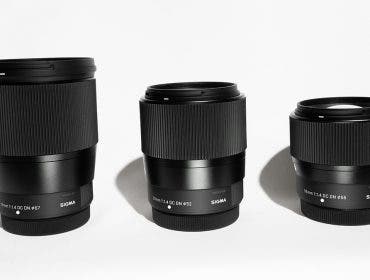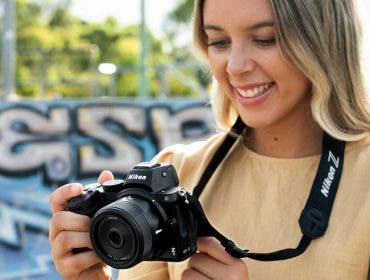I have been a freelance photographer for most of my career, except for a stint as a staffer at LIFE Magazine. I’ve spent 25 years in the field for National Geographic, contract photographer with Sports Illustrated, and Nikon Ambasssador. This time has consisted of lots of adventures, mistakes, and head-slapping “Why did I shoot it that way?” kinds of moments. Although, there have also been moments of sheer joy and astonishment at all the people you meet. There are slices of time where you know truth is being spoken so forcefully that you forget to breath while you click the shutter. These are the moments worth capturing as we talk about storytelling photography.
Prepare
It’s important to do your reading and research for storytelling photography. Know everything you can about your subject. It gives you the grist to make chit-chat at the camera. Know the names of their kids, or wife, or husband. It puts them at ease when you display the simple fact that you cared enough to do your homework.
Know their strengths. If they’re a movie star, watch everything. If they’re a track star, study them. On assignment for Sports Illustrated for the Rio Olympics, I was one of seven photographers assigned to shoot Usain Bolt’s 100-meter gold medal run. So, I studied him in the heats. Being bigger than the other sprinters, he broke from the blocks split seconds behind the other runners. This meant he’d be buried from view in the middle lanes. Auto focus is very good but trying to draw a bead on Bolt with an AF cursor would have been dicey. So, having watched him, it made sense to go with manual focus. I watched him practice his start repeatedly, and pulled a focus on where his head would pop up amid the gaggle of sprinters. This shot ran as the lead for Sports Illustrated’s pictorial account of the race.

Be Ready to Leave Your Schedule Behind
When you sign on to do some serious story about someone, their life becomes the center of yours. You march to their drummer. You can’t approach someone and tell them that you’re passionate about telling their story and then say “But I can’t do it today…” I often feel that doing a story is like stepping onto a boat without having a clue where that boat was going.
I was shooting a story called “The Sense of Sight” for National Geographic. They sent me to Tanzania to document the tragic effects of trachoma. I was supposed to be there for about a week. When I got there, I felt that piece of the story warranted more time. So, I simply stayed for three weeks. At that point in time, there was no internet, no cell phones, video calls — nothing. When I got back, my editor didn’t even bat an eye. He had trust that I spent the time wisely, even though he hadn’t heard from me.

Are you looking to hone your portrait skills? Check out Tips for Aesthetic Portrait Photography with Brandon Woelfel.
Embrace Technology, but Use it Wisely
We live in a golden age of photography. The turbocharged technology of cameras is off the charts. It enables us as creators to explore new territory, expand the envelope of our imagination, and achieve technically profound pictures all on our own. Whereas, in the days of Kodachrome, you might need a lot of lights, a crew, and extended time in the field. I shoot with the Nikon Z 9 and it’s a wondrous machine.
Although, it’s important to remember your camera didn’t go to art school. It has no creative spirit. As smart as it is, it’s a completely dumb instrument until you infuse it with your head and your heart. The automated modes of the camera will render some fine results when you point at just about anything, but what sets your picture apart is the “you” factor. What sets your pictures apart? It’s your point of view. Master the camera and make it do what you want.

Be Unafraid of Failure
In fact, you should embrace failure because it is a form of progress. Your path to an excellent picture is littered with bad ones. Any photographer who claims greatness occurs everytime they put their eye in the camera is lying. This is a process, a long road, and a never-ending one. You will never shoot your best picture. That one is still out there and the pursuit thereof is what drives you. If you ever get to the point where you think photography is easy every time, that’s the time to hang up the cameras. There is greatness to be found in the relentless pushing.
The point is, this is hard. To really stick with this and push year after year to produce a body of editorial work is an incredibly difficult task. There are a lot of missteps along the way, but those missteps lead you to that glorious frame.
This mirror picture was the result of trial and error… and error… and error. I knew I could turn the corner on it, it just required accepting a lot of failure along the way.

Look for more on mirror photography? Read Mirror Photography Ideas, Tips, and Examples to help you get started.
Always Remember the Hands
When telling the story of someone’s life, their hands are almost always on the list. Hands can be expressive, worn, battered, or elegant. They can really show the path of a life. It falls in with the mantra I always repeat in the field: Entire, to detail. Start wide and big. Show the reader what the whole shebang looks like. But then — just like peeling an onion — get closer and closer. Reveal layer upon layer of the story or scene. Remember, the person who is consuming your storytelling photography is not there with you, having this intensely visceral field experience. You have to show them everything.

There are an infinite number of storytelling photography tips, or things to think about as a photographer. Looking for more? Wear sunblock. Always follow natural light. And for big shoots, put on your lucky underwear!
Check out more of my work in AdoramaTV’s new docuseries, THE MASTERS.






